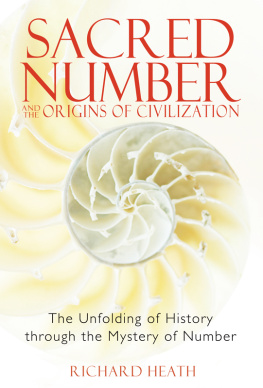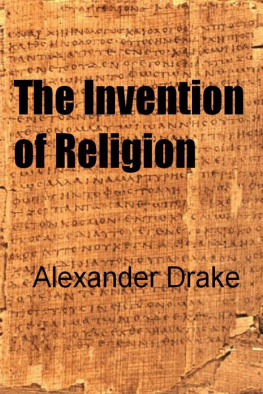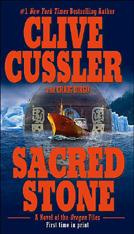Richard Heath - Sacred Number and the Lords of Time: The Stone Age Invention of Science and Religion
Here you can read online Richard Heath - Sacred Number and the Lords of Time: The Stone Age Invention of Science and Religion full text of the book (entire story) in english for free. Download pdf and epub, get meaning, cover and reviews about this ebook. year: 2014, publisher: Inner Traditions/Bear & Company, genre: Science fiction. Description of the work, (preface) as well as reviews are available. Best literature library LitArk.com created for fans of good reading and offers a wide selection of genres:
Romance novel
Science fiction
Adventure
Detective
Science
History
Home and family
Prose
Art
Politics
Computer
Non-fiction
Religion
Business
Children
Humor
Choose a favorite category and find really read worthwhile books. Enjoy immersion in the world of imagination, feel the emotions of the characters or learn something new for yourself, make an fascinating discovery.

- Book:Sacred Number and the Lords of Time: The Stone Age Invention of Science and Religion
- Author:
- Publisher:Inner Traditions/Bear & Company
- Genre:
- Year:2014
- Rating:3 / 5
- Favourites:Add to favourites
- Your mark:
- 60
- 1
- 2
- 3
- 4
- 5
Sacred Number and the Lords of Time: The Stone Age Invention of Science and Religion: summary, description and annotation
We offer to read an annotation, description, summary or preface (depends on what the author of the book "Sacred Number and the Lords of Time: The Stone Age Invention of Science and Religion" wrote himself). If you haven't found the necessary information about the book — write in the comments, we will try to find it.
Richard Heath: author's other books
Who wrote Sacred Number and the Lords of Time: The Stone Age Invention of Science and Religion? Find out the surname, the name of the author of the book and a list of all author's works by series.
Sacred Number and the Lords of Time: The Stone Age Invention of Science and Religion — read online for free the complete book (whole text) full work
Below is the text of the book, divided by pages. System saving the place of the last page read, allows you to conveniently read the book "Sacred Number and the Lords of Time: The Stone Age Invention of Science and Religion" online for free, without having to search again every time where you left off. Put a bookmark, and you can go to the page where you finished reading at any time.
Font size:
Interval:
Bookmark:

In memory of Alexander Thom, Hlne Fleury, and John Michell, without whom this book would not have been possible
ACKNOWLEDGMENTS
THE READER MIGHT wonder why the story told in this book has not been possible until now. The reason is the dispersed nature of essential aspects of this story, for no story can emerge without a reasonable explanation of how one thing could have led to the next. In this way one forms a possible history of the megalithic.
The fundamental steps that led to making this story were the discovery of day-inch counting with my brother Robin Heath and the subsequent discovery of the importance and uses of circumpolar observatories in the megalithic. The work of John Michell and John Neal in pursuit of ancient metrology has been invaluable. Since the 1970s they have been restoring historical metrology into a pre-arithmetic numerical science. Alexander Marshaks analysis of time-factored bones has been invaluable in demonstrating that counting time was a widespread hobby if not a tool in the Upper Paleolithic period. The Association Archeologique Kergal (AAK), a group operating in the 1980s to research in particular the monuments of Brittany near Carnac, contributed through their magazines unique reportage on monuments with useable technical details and demonstration of the use of multiple squares. Howard Crowhurst, a former member, first showed me monuments in 2004, and he has built on their work with tours, conferences, and books. AAK drawings have been used throughout chapter three. The engraved stones of Carnac were scanned in 3D by Laurent Lescom as part of a Nante University team, and two of these were useful for adding an extra perspective on day-inch counting and resolving the royal cubits astronomical origins. One has to thank the authors of Hamlets Mill for their efforts investigating the mythology of precession, integrating the measurement of the earth with the astronomical studies of the megalithic period. The downloadable Google Earth database from megalithic.co.uk provided a comprehensive guide to geodetic menhirs not available in books. John Michells correspondence and work on the quarter-degree model from Stonehenge to Avebury was key to chapter six. John Neals analysis of the Great Pyramid and geodetic works in Egypt gave a direct clue to megalithic transmission of metrology to ancient Egypt.
INTRODUCTION
MODERN MATHEMATICAL SCIENCE deals in precise measurements accurate to many decimal places. Simple integers rarely appear. The trend has recently been toward reforming our units of measure to get away from specific objects of reference and base them on universal physical properties. In ancient times people tried much the same thing, but, not having an arithmetical system, they used whole numbers of the same length (the inch) to measure astronomical time (the day). Then, using geometry, they created their first objective measure, a megalithic yard, which expressed the difference between the solar and lunar year. Their idea of sticking to whole numbers remains part of our number theory and, as Leopold Kronecker famously said, God created the natural numbers, all else is the work of man.
The natural numbers or integers carry with them a sense of unity and design as to how they interact with one another. As symbols these number relationships affect the physical world and this suggests they provided a fundamental creative fabric for the universe. The constructions made by megalithic people present such a view. The monuments could only reflect a heavenly pattern (As above, so below) because the fabric of abstract whole number relationships appears to have been employed in a later weaving of planetary time cycles, which were then seen as the work of some god or gods (the demiurge) who surrounded the Earth with numerical time ratios.
Today it is not easy to believe in an organizing role in the world between whole numbers and the structure of the physical systems that surround us, the Earth, and the solar system. However, many of our institutions are relics of a time when human life was organized to correspond with such a reality, as with the historically widespread seven-day week, the twelvefold division of space, the ideas behind many of our religious symbols, the organization of ancient and modern calendars, and the units of measure we still use. Those who investigate this phenomenon of ancient number association must either assume these were merely ancient beliefs without a substantial basis in fact or be damned (as a regressive influence within a modern scientific age) for suggesting that the world has a numerical design.
However, such polarizations of thought usually hide great riches, despite being sat on by the proverbial dragons of cultural prejudice. The ancient number theory was a system of thought at least as grand as ours that connected human thought and action to the causes of the universe itself, and did so in a more direct way than our own science or religions do for common citizens today. Indeed, this ancient science appears to have invented our religions and developed the numeracy underlying our modern science.
The number relationships of the following chapters imply one of two things. Either the planet we call Earth has been created according to some numerical criteria or some incredible genius in the past invented an amazing numerical discipline to make it look as though the Earth had been created by inventing a system of measures, a map of astronomical time, and a model of the Earths geoid (its shape and size) that conform elegantly to several numerical relationships. This ancient geoid was remarkably simple, being based upon different approximations to pi and made implicit within ancient metrology through the cunning use of whole number ratios. One has to question whether it was possible to have created such a wonderful artifact without the Earth actually being like that.
It might have been fitting for early mans intuitive powers to have been awakened in this way, as an artifact of creation. It appears unlikely that the massive bodies surrounding the Earth could have accidentally fallen into time cycles so rationally interrelated, especially when the earth is not at the center of the solar system. It stands out that the entire solar system is somewhat focused on the Earth, making its cycles fit some meaningful criteria just as the shape of the earth is found related to time.
The factual basis for creationism is not at odds with modern science but rather with a modern superimposition, which mistakenly concludes that the gods of religion did not, in any way, make the world (just as we alter it using physical forces). But eliminating something from possible proof is fundamentally unscientific and, in this case, an unfortunate reaction against an ancient world where the knowledge of such gods was an exact science like our own.
If some ancient group or groups managed to read astronomical time and the shape of the earth, then their genius was already old by the time of the ancient Near East, whose numerical sciences were derivative but now definitive, defining what any ancient astronomy could have been. I suggest that what followed the original astronomical discoveries, recorded in the megaliths, was a descent into superstition about the gods and an ascent into todays mathematics, focused on the calculations and proofs possible once numbers were liberated from being the lengths within geometrical structures.
The scientists of the megalithic can then be seen as having had a distinct purpose for the evolution of the human intellect, to establish both an early exact science and to develop our religious symbolic cultures, where symbols were religious intermediaries, expressing the form of the gods. The megalithic sciences may also have been an initiation for the human mind, anticipating the kind of cultural mind we have today and this, like many real-world initiatives, probably met with complications due to the behavior of the human groups aggregating around the new technologies of, first, a Bronze Age and then an Iron Age.
Font size:
Interval:
Bookmark:
Similar books «Sacred Number and the Lords of Time: The Stone Age Invention of Science and Religion»
Look at similar books to Sacred Number and the Lords of Time: The Stone Age Invention of Science and Religion. We have selected literature similar in name and meaning in the hope of providing readers with more options to find new, interesting, not yet read works.
Discussion, reviews of the book Sacred Number and the Lords of Time: The Stone Age Invention of Science and Religion and just readers' own opinions. Leave your comments, write what you think about the work, its meaning or the main characters. Specify what exactly you liked and what you didn't like, and why you think so.






